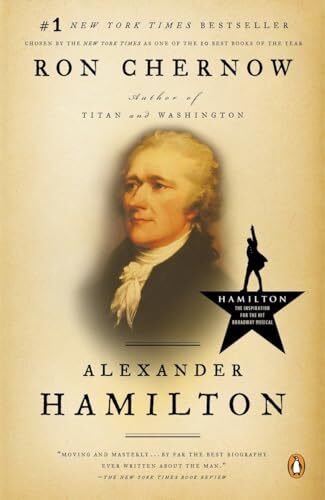
My high school did a poor job of teaching American History, so I found this book to be a fascinating look at the birth of the United States through the perspective of one (very influential) man. Some of the highlights:
The formation of a new nation
I found it remarkable to see how an entirely new government—an entirely new nation—was formed from the ground up. The US government today is so large and established that it feels like an institution that has been there since the beginning of time, but the reality is that someone had to do the hard work to create it.
This book shows the pivotal role Hamilton had in:
- The first presidential cabinet
- Creating the US treasury department
- Setting up what would become the coast guard
- Establishing the first national bank
- Defining a variety of financial and bookkeeping standards that are still used to day
- And so on
This was an era when Hamilton’s ~50-person staff was considered “big government.”
You can’t have laws for everything
This book highlights that no legal system or constitution can define laws for every possible situation. Instead, much of the legal system is determined based on precedent. It was fascinating to see just how much of that precedent was established in the earliest days of the government.
For example, the way presidents behave and interact with others, putting together a cabinet of advisors, peacefully stepping down after 2 terms, and so much else that we now take for granted is mostly precedent established by George Washington.
How politics and debates used to work
I was fascinated to see that political debate in the 18th and 19th century was done primarily by writing essays in newspapers and journals. Moreover, most of these essays were published under pseudonyms so that the focus would be on the argument rather than the person presenting that argument.
For example, to argue in favor of ratifying the constitution, Alexander Hamilton, James Madison, and John Jay, under the pseudonym “Publius,” published 85 essays that later became known as the Federalist Papers. This sort of political debate meant that politicians had to be well-educated and able to write and debate clearly and eloquently, which suggests that politicians of that era were of a very different caliber than the ones we see today who are all about quick sound bites on the radio and looking good on TV. Similarly, the voting public presumably read through these (long, numerous) essays to make their political decisions, which suggests that voters of that era were of a different caliber too.
Perhaps we could go back to this system instead of the multi-billion dollar media campaigns we see today?
The founding fathers
This book does a good job of dispelling the notion that the “founding fathers” were:
- Unified in their beliefs
- Good role models that we should follow
- Knew what they were doing
It was interesting to hear about all of their various character flaws (e.g., finding out how many of them were wealthy slave owners) and to learn about the feuds and arguments that developed between them (e.g., the ongoing debates, fights, and animosity between Hamilton, Jefferson, and Madison).
Some things never change
It was a bit disturbing to see that, in many ways, some of the awful politics we see today existed from day 1. For example, when the first political parties—the Republicans and the Federalists—had just started to form, the divide we see in America now was already present. In particular, the Republicans were already pretending to be the party of the poor, small farmer, when in reality, they mostly represented the interests of the rich, slave-owning elites in the South. Similarly, the Republican party seemed especially good at targeting emotions, whereas the Federalists were always trying to convince voters through reason. Some things never change.
The tragedy of duels
Hamilton’s death was tragic and infuriatingly unnecessary. When Aaron Burr overheard, from a second hand source, that, months ago, Hamilton might have said something “despicable” about him at a dinner party, he sent a letter to Hamilton demanding a retraction. Hamilton responded with a letter demanding to know the exact insult, so he could deny or confirm it, but refusing to issue a blanket apology. They kept exchanging letters, escalating things further and further, with neither man being willing to back down, until finally they met for a duel, and Burr killed Hamilton.
All this, over an alleged, unconfirmed insult at a random dinner party. It’s hard to believe that such educated and worldly adults could believe that a duel is a reasonable way to settle any debate or deal with any matter of “honor.” In my view, nothing is less honorable than murdering someone over such issues.
Other thoughts on the book
The main downside of the book is that it’s very long, and not all parts are equally interesting. For example, the intro section, before Hamilton migrates to America, feels overly detailed and boring; likewise, the book does small “portraits” of many people that crossed paths with Hamilton, and while that makes sense for the key figures in his life—e.g., his wife—some of the other portraits feel like unnecessary tangents. An aggressive editor willing to trim the fat would’ve helped here.
